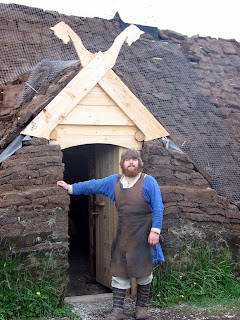











Most of these wildflowers were photographed near the Rose Blanche Lighthouse in southwestern Newfoundland in a small amount of soil since the area is very rocky. Signs with their names accompanied many of the flowers such as the buttercup so I think that I have named them correctly. But I’m not a botanist so if I have incorrectly named a flower, please send a comment to tell me what you think the correct name is.
The red Pitcher Plant is the provincial flower of Newfoundland. Bakeapples are a favorite jam plant that produces a white flower and an orange berry that resembles a raspberry with large seeds but has it’s own unique flavor. Next is the white three-toothed cinquefoil. Sometimes the bushy white Labrador Tea Rose is used in a beverage. The small Harebell or Blue Bell is very delicate. Another purple flower is the wild Iris. The yellow flower is the Common Buttercup. The large white Queen Ann’s Lace, Purple Clover, Daisies and Yellow Buttercup often cover the hillsides. The Fireweed beside me isn’t only grown in Alaska but you often see hillsides covered with it. As you can see from the two pictures, the fireweed booms that were beautiful are almost gone. That is a sign that COLD WEATHER IS COMING SOON. I’ve more stories and photos but they will need to be written on the blog later. It’s time to leave Newfoundland.
The red Pitcher Plant is the provincial flower of Newfoundland. Bakeapples are a favorite jam plant that produces a white flower and an orange berry that resembles a raspberry with large seeds but has it’s own unique flavor. Next is the white three-toothed cinquefoil. Sometimes the bushy white Labrador Tea Rose is used in a beverage. The small Harebell or Blue Bell is very delicate. Another purple flower is the wild Iris. The yellow flower is the Common Buttercup. The large white Queen Ann’s Lace, Purple Clover, Daisies and Yellow Buttercup often cover the hillsides. The Fireweed beside me isn’t only grown in Alaska but you often see hillsides covered with it. As you can see from the two pictures, the fireweed booms that were beautiful are almost gone. That is a sign that COLD WEATHER IS COMING SOON. I’ve more stories and photos but they will need to be written on the blog later. It’s time to leave Newfoundland.







































